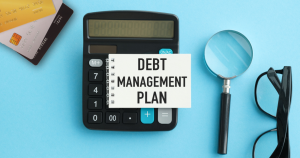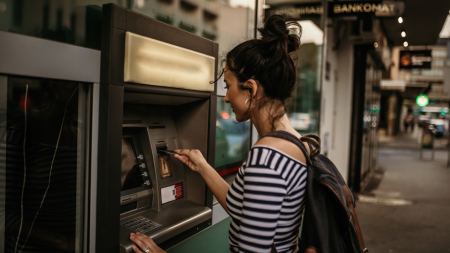Key takeaways
- With the back-to-school shopping season in full swing, families should take every opportunity they can to save money.
- One way to lower costs is to shop during a tax-free weekend or holiday, if one is offered in your state.
- To boost your savings further, pair tax-free weekend shopping with a credit card that offers rewards on back-to-school purchases.
There’s no disputing that the cost of consumer goods has soared. Even though the U.S. inflation rate has cooled somewhat as of July 2025, prices are still slow to fall in many sectors. Since what was once economical may now be expensive, the prospect of shopping for your child’s school items could be daunting.
And sales taxes are an extra burden.
In states like Louisiana, the combined state and local tax rate adds up to over 10 percent according to the Tax Foundation, which makes the cost of buying school supplies that much more of a financial burden on parents.
Who pays sales tax?
As a consumer, you likely pay a variety of taxes throughout the year and for various events, including income taxes on the money you earn and property taxes on your home. Another common charge is sales tax, which you’re charged when you buy many physical goods. The money generated from sales tax goes into state coffers to pay for expenses such as infrastructure, fire and police departments and public schools.
There are currently only five states that don’t charge sales tax: Alaska (which does allow municipalities to assess local sales taxes), Delaware, Montana, New Hampshire and Oregon. If you live in one of these states, you enjoy a sales-tax-free holiday year round. If you don’t, however, you’ll pay this charge on eligible items every time you visit the cash register or hit the “buy” button online.
Tax-free weekends, strategic shopping can add up to savings
One way to take the edge off the back-to-school season is to wait for your state’s tax-free weekend to make your purchases. On these weekends in participating states, you can purchase select items or categories of items, such as clothing or electronics, without owing sales tax, making it a good time to set kids up with the things they need for school.
But it’s not the only way to save.
To increase your savings even further, check for unused gift cards — 43 percent of U.S. adults have at least one unused gift card, gift voucher or store credit, according to Bankrate’s 2024 Gift Card Survey — and charge your purchases to a credit card that offers rewards.
Or you can shop strategically.
Angela Davis, a Maryland mother of two, shared that instead of shopping during Maryland’s a tax-free holiday, she finds it more effective to shop for back-to-school throughout the summer by paying attention to the circular sales and even making the two- or three-hour drive to tax-free Delaware.
“It makes more sense for me to pay attention to the sales that come out every week,” Davis says. “Maryland sales tax is only 6 percent which isn’t that big of a discount compared to some of the coupons I find or sales events that happen throughout the summer when you’re saving like 25 percent off or more.
“And Delaware has no state tax,” she continues, “so some people just choose to make the drive up there to shop for school supplies instead of waiting for tax-free week.”
While Maryland’s 6 percent sales tax may not be a major consideration for Davis, rates in your state could be higher (or lower). A 2025 mid-year roundup of rates conducted by the Tax Foundation found that Colorado has the lowest state sales tax rate, at 2.9 percent, while California has the highest rate at 7.25 percent. Adding in local sales taxes, though, can change things dramatically. When figuring in local taxes, Louisiana rises to the most expensive at 10.11 percent and Tennessee comes in second at 9.61 percent. Colorado, with its low state sales tax becomes the 16th most expensive sales tax state when you figure in local taxes — the average combined rate is 7.86 percent.
So when you’re shopping for your children’s school supplies, you may want to catch a break wherever you can.
When you can get a sales tax break
If you reside in a state that does charge sales tax on purchases, watch for opportunities to purchase items for education (and emergencies) during those special “holidays,” making the things you need to buy more affordable.
Consider, for instance, if you need to buy a new $400 laptop for your soon-to-be college student. Even a break on 6 percent sales tax would save you $24 on the purchase. Multiply that out to additional purchases of clothes and other school supplies and the savings can add up.
Check the Tax Foundation’s list of 2025 State Sales Tax Holidays to see if your state is offers a holiday, when it is for back-to-school items and an overview of what you can get without taxes being added. A few examples for 2025 include:
| State | Dates | Items included |
|---|---|---|
| Connecticut | Aug. 17-23 |
|
| Florida | Aug. 1-31 |
|
| Maryland | Aug. 10-16 |
|
Depending on the state in which you shop, some of those costs can be significantly lower when you shop during the sales-tax-free holiday.
For example, Florida has a 6 percent sales tax rate and local taxes that can push the amount above 7 percent. If you purchase a computer with a $1,500 price tag, a 7 percent sales tax adds $105 to your total. But if you buy it between Aug. 1-31, 2025, you can put that cash back in your pocket or spend it on something else your child needs for school.
Although tax-free holidays can be helpful for parents looking to save on back-to-school supplies, sometimes it’s not worth the wait. In states like Connecticut and Maryland, the sales tax holiday begins just two weeks before school starts, which can be far too late to gather everything on the school supply list. Davis shared that waiting for Maryland’s tax-free week just isn’t feasible for her family.
“Well, you know, [redacted child’s name] goes to private school, so her uniform shirts are $30 a piece,” Davis explains. “Last year we waited too long and her sizes were out of stock when we went to buy them. By the time tax-free week rolls around, I’ve already bought most of their stuff or put it on layaway since school for them starts like two weeks later.”
Maximize your tax savings with a rewards credit card
Although inflation has moderated some from the highs of a few years ago, 30 percent of back-to-school shoppers still say inflation is changing how they shop, according to Bankrate’s 2025 Back-to-School Shopping Survey.
There are some non-tax-related ways to ease that burden, including making smart use of a credit card.
Spend toward a welcome bonus
Apply for and use a new credit card with a sign-up bonus. When you use your new card to purchase your children’s school supplies, all the money you charge can go toward earning the card’s welcome bonus. Once you hit the threshold, you’ll qualify for the card’s bonus. Not to mention, if you get a rewards card, your spending also earns rewards which can be used to further offset the cost of school supplies.
For example, the Bank of America® Customized Cash Rewards credit card has a $200 online cash rewards bonus after you spend at least $1,000 with the card in the first 90 days of opening the account. That computer you bought for $1,500 will easily get you there. If you live in a state like Tennessee that charges total tax averaging more than 9 percent, the $135 tax savings during a tax-free holiday plus the $200 bonus will put you ahead by $335. Remember to pay the balance in full by the due date, so interest doesn’t eat into your savings.
Use a cash back card that rewards back-to-school purchases
The sting of back-to-school purchases is less intense when you know you’re earning cash back with every swipe of your card. And when you use one of the best cash back credit cards that offers rewards on back-to-school purchases, you stand to add on to your tax holiday savings.
The Blue Cash Everyday® Card from American Express offers 3 percent cash back at U.S. supermarkets, U.S. gas stations and U.S. online retail purchases (up to $6,000 spent per calendar year in each category, then 1 percent). The Bank of America Customized Cash Rewards card lets you earn 3 percent back on purchases in the bonus category of your choice from the following list: gas, online shopping, dining, travel, drugstores or home improvement. You’ll also earn 2 percent back at grocery stores and wholesale clubs and 1 percent on all other purchases (3 percent and 2 percent earning is on up to $2,500 in combined purchases per quarter, then 1 percent).
Since you can buy nearly everything online these days, earning bonus rewards on online shopping with either of these cards means you could earn 3 percent back pn many of your back-to-school purchases (up to their respective spending caps).
By adding that cash back to your tax savings — or even if you don’t worry about tax-free holidays — you’ll essentially lower the cost of those purchases as long as you pay off your balance in full and don’t accrue interest charges.
Still, however tempting it is to chase after credit card rewards while shopping for school supplies, it’s important not to use that as an excuse to overspend and carry a balance.
Pay off your balance in full when possible
When you’re able to pay off your credit card balance in full each month, earning rewards on your purchases can help offset costs. But carrying a balance means those rewards will quickly be absorbed by mounting interest charges instead.
Use a 0% APR purchase offer
Finally, if you want to make some large purchases but don’t have all the cash to pay for them in full right away, you may also consider an intro 0 percent APR credit card.
In general, you will need good to excellent credit, but if you can qualify for a 0 percent APR card, you can make your back-to-school purchases and avoid the interest charges while you pay it off over the intro period of a year or longer.
The Wells Fargo Active Cash® Card for instance, offers a 0 percent intro APR on purchases for 12 months and then a 19.24%, 24.24%, or 29.24% Variable APR. There’s also a $200 cash rewards bonus after spending $500 within the first three months of account opening.
If you decide to apply for Active Cash, spending $1,500 on school supplies would earn you a total of $230 in cash rewards between the 2 percent cash rewards and earning the welcome bonus. As long as you pay off the balance before the intro period ends, you’d pocket that cash back without paying interest.
The bottom line
As you prepare for the upcoming school year, there are a variety of tactics that can help you save money on all those back-to-school needs.
Even though inflation has slowed, it’s still smart to identify opportunities to lower your costs when you can. Make back-to-school purchases with one of the best rewards cards, pair that with any sales tax-free days your state offers as well as available coupons or sales, and you can magnify your savings. Be mindful of staying within your budget and paying off your credit card each month to keep those savings in your pocket.
Why we ask for feedback
Your feedback helps us improve our content and services. It takes less than a minute to
complete.
Your responses are anonymous and will only be used for improving our website.
Help us improve our content
Read the full article here









